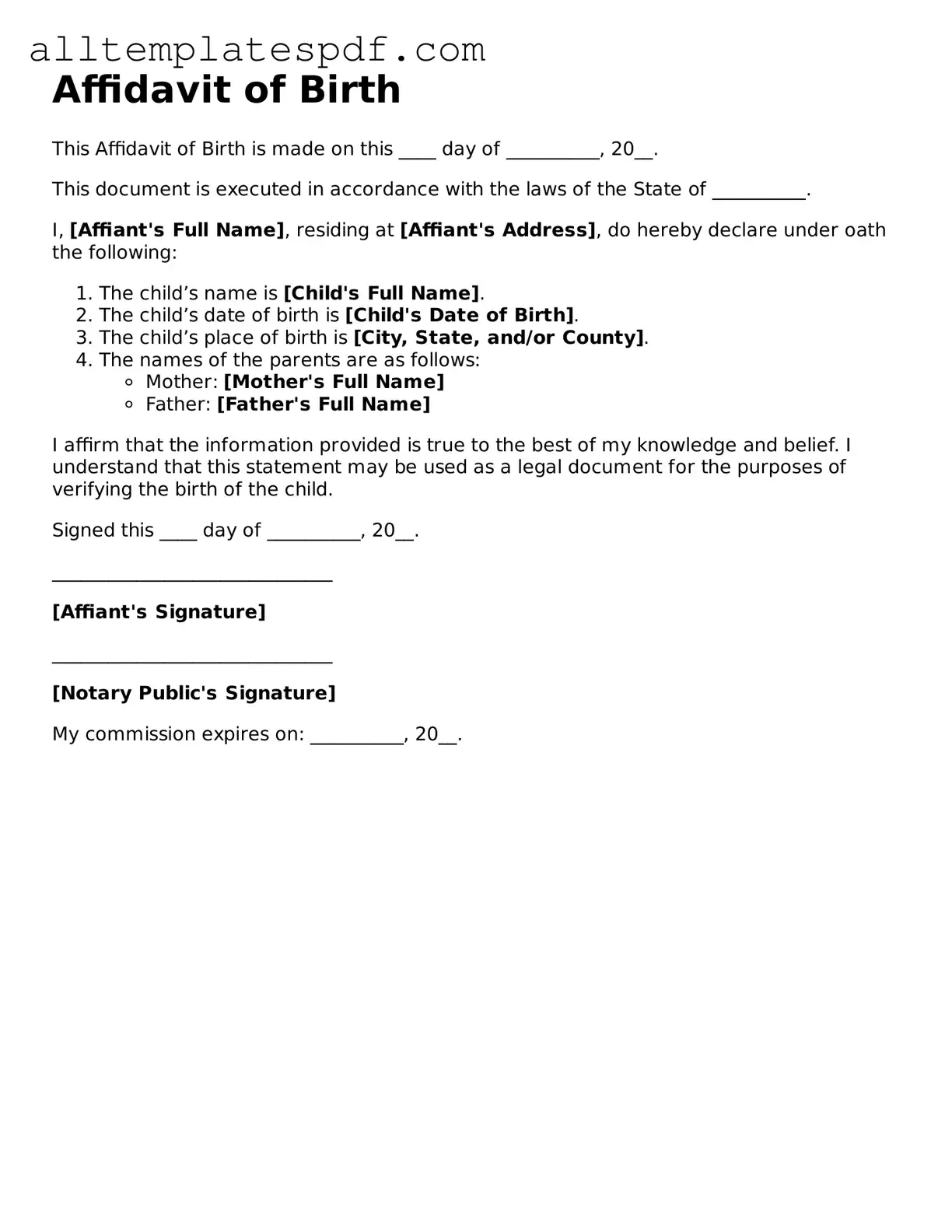Filling out the Affidavit of Birth form can be a straightforward process, yet many individuals encounter common pitfalls that can lead to delays or complications. One prevalent mistake is failing to provide complete and accurate information. It is essential to ensure that all required fields are filled out correctly. Omitting details, such as the child's full name or date of birth, can result in the form being rejected or returned for correction.
Another frequent error involves the use of incorrect documentation. Supporting documents, such as identification or proof of residency, must be included as specified. Submitting outdated or inappropriate documents can hinder the processing of the affidavit. Always double-check the requirements to ensure that the correct paperwork accompanies the form.
Many individuals overlook the importance of signatures. The Affidavit of Birth form requires the signatures of both parents or guardians, depending on the circumstances. Failing to sign the document or not having the necessary parties sign can render the affidavit invalid. It is advisable to review the signature requirements carefully before submission.
In addition, people often underestimate the significance of notarization. An affidavit typically needs to be notarized to be considered valid. Neglecting this step can lead to complications, as many agencies will not accept an unnotarized affidavit. Be sure to locate a qualified notary and complete this step before sending in the form.
Lastly, many applicants do not keep copies of their submitted forms. Retaining a copy of the completed Affidavit of Birth is crucial for future reference. If any issues arise or if further information is needed, having a copy on hand can simplify the process of addressing those concerns. Taking these precautions can help ensure a smoother experience when submitting the Affidavit of Birth form.
